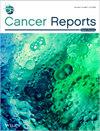Complete Immunophenotypic Reversal of Chronic Lymphocytic Leukaemia With High Dose Parenteral Methylcobalamin: A Case Report and Brief Review of Cobalamin in Cancer
Abstract
Background
Supposed ‘spontaneous’ remissions in chronic lymphocytic leukaemia (CLL) are extremely rare. By the most stringent immunophenotypic criteria, there are only seven cases to date of unexplained, immune system effected cures. A historic review of this phenomenon is presented as context for this eighth case of CLL immunophenotypic reversal.
Case
A 59-year-old, molecular biologist, stage I CLL, whose diagnosis and recovery were both thoroughly documented, not content to watch and wait, chose to treat himself, after individual tumour susceptibility testing, with evidence based, biological response modifiers, which initially seemed to keep his CLL stable. This included 1 mg of hydroxocobalamin injected i.m. daily. However, after some years his lymphocytosis began slowly to drift upwards. At that point, he was persuaded to change his injection protocol to methylcobalamin, at 50 mg i.m. a day, a dose whose clinical safety is sufficiently well-established, and a form of cobalamin that the research literature shows has anticancer actions.
Conclusion
This change in cobalamin form and dose proved a critical turning point. Complete disappearance of the lymphocytosis also coincided with a severe infection and an even further temporary increase of the parenteral methylcobalamin dose, both catalytic factors. In the 4th and 5th years following this, the patient's repeated immunophenotyping showed no clonal disease present. A brief review of the field of cobalamin in cancer research and treatment is given, with discussion of the various mechanisms by which cobalamins may impact on cancer/CLL. Historic analysis reveals that cyanocobalamin is generally cancer promotional, whereas hydroxocobalamin, methylcobalamin and adenosylcobalamin are cancer protective and cytotoxic. It is hypothesised that the actions of cobalamin in cancer aetiology and oncogenesis/progression are intertwined with those of nitric oxide, which tumours regulate to dupe the immune system to their presence, by causing a functional cobalamin deficiency in the host.


 求助内容:
求助内容: 应助结果提醒方式:
应助结果提醒方式:


